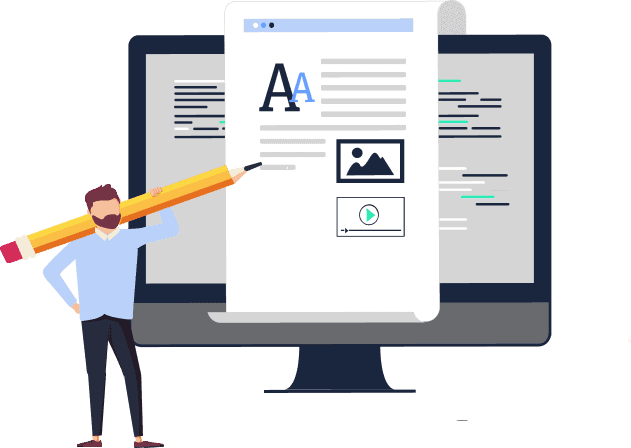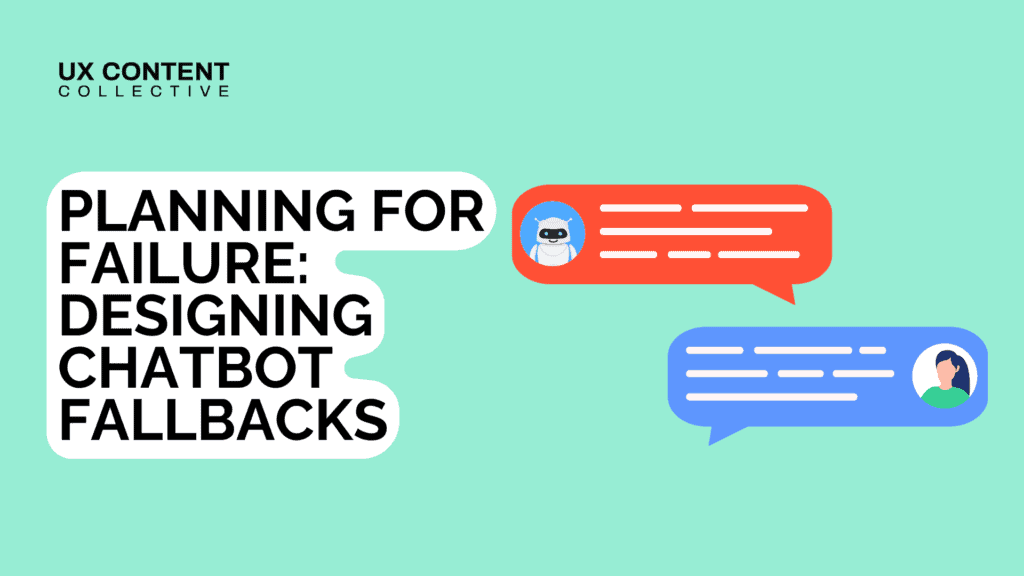

Interested in UX writing and content design?
Explore our content design and UX writing training:

Interested in content design? Check out our complete guide to content design (and how it’s different from UX writing).
At the beginning of 2024, I had writer’s block. I set out to craft a list of goals for our content design team, but I was drawing a blank.
The Condé Nast content design team supports myriad products, revenue streams, and internal and external products. All of the upcoming initiatives and product roadmaps were swirling around my head—the projects were too varied to land on one theme. Our content designers were each working on areas quite unique from one to the other—what goals would feel universal, but not redundant (nor added pressure) to their squad goals?
Just like any good cure for writer’s block, I likely stamped my foot in frustration, walked away from the challenge, and probably got a snack. When I returned to my desk, I glanced a bird’s eye view of the state I had (stubbornly) left it in: an array of post-it note ideas, upcoming projects across teams, a looming host of unopened tabs, full of craft-related articles I had yet to get to. It looked like a vision board. I thought: “If I were to take my team’s commitments, personal goals, and team to-do’s and make them into an aspirational mood board of all we’ll accomplish this year, this is what it’d look like.” A-ha!
So, I set out to create a team vision board for our year ahead, so that I could take another step back and understand any recurring themes that could help us narrow our focus. To source inspiration and user feedback in tandem, I created a digital vision board space (re: Figma file full of empty rectangles) and hosted a “resolution brainstorm.” I asked my team, “What do we want to do more of this year?” “What could we cut out?” “What does the ideal 2024 look like for our team? For each of you?”
We, of course, started with the classic collage activity. We sourced images that represented what we wanted to embody for the year ahead. Then we did some woo-woo manifestation: “By the end of 2024, we’ll have…” Because this took place on Figma, themes immediately began to emerge from each teammate’s world. We could add votes and stickers in real time. No scissors and glue were needed to make our unhinged collage.
What came out of our session was a list of “emerging goals,” or five sentences that each encapsulated a handful of projects, ideas, and things we wanted to get done as a team. The overarching sentence served as a guiding light: They were easier to remember and ladder up our work to, it helped us carve out space to dedicate to discipline work in addition to product squad work, and it tied us more closely together as a team. Rather than cheering on each teammate’s separate world, we could partner more closely on initiatives that could benefit us all.
We also had a hell of a lot of fun, and got pretty excited—often hard to do in January!
During our last team meeting of the year, I presented our annual round-up (famously designated as Woohoos by Sophie Tahran). Each content designer spoke to their personal and project accomplishments (public speaking, product launches, surviving a concussion…).
Then we pulled back up our now-dusty vision board. I was pleased to see we accomplished a handful of milestones in each of our five goals. I liked the process so much, I was already looking forward to repeating it in 2025. Because of its timing and sense of renewal, I began to think of it as our content design team resolutions.
The same sort of exercise may suit your team, or even just carving out some space to create a casual and carefree moodboard. (Looking back, I’m not entirely sure what to make of ours, which is half the fun.)
I had the thought that resolutions may benefit any content designer or their team. I jotted down a handful of themes that seemed to emanate from our goals. They sounded like the punched up, inspirational poster version of the actual goal names we used. (Ex. Invest in creating, maintaining, and contributing to scalable systems. → Scale up.)
Looking at this pared-back list, it felt quite universal. Applicable to any content design contribution, nebulous enough to make one’s own, sometimes even seemingly at odds with one another! It’s a list of punchy, ambitious, and quite abstract goals for content designers. Many are applicable to any aspect of work, while some take particular aim at common content design woes. There’s no instructions on how to successfully complete the goal, or what success even will look like. That’s up to you—every team is different.
So, take a look through the list below and see what speaks to you. Or, chat with your team and set up your own vision board exercise. Discuss which issues feel universal on your team, and what might be a useful long-term goal to tackle as a team.
1. Don’t ask for a seat at the table. Show up.
Politely and firmly ask for the invite. Remind your teammates it’s part of why the company pays to fill your role.
2. Team up.
Teams rarely have the opportunity to staff more than one content designer on a squad or initiative. Find ways to work together on a discipline-focused, side project, or something fun. Some of our most forward thinking (and most fulfilling time at work) has come from content designers teaming up.
3. Push back.
Not enough information to write accordingly? Unable to make sense of the information architecture? Feel empowered in your role to learn more, ask questions, and hesitate to just “do the copy.”
4. Don’t apologize.
Take the apologist out of your product’s voice (unless it’s a real whopper of an error message).
5. Pay attention to the details.
Sweat the small stuff. This is where our craft’s little tweaks often lead to the biggest impact.
6. Think big.
What’s the blue-sky solution? What would bring your users joy, relief, or clarity? What have you not thought of yet? What would push the boundary?
7. Don’t burn out.
Read up on and recognize the signs of burnout before it happens. Speak with your manager and support system about what triggers it, and how to avoid becoming stretched too thin, so you can continue to do your best work.
8. Dive into your design system.
Find the root cause of your copy concerns. Befriend your local design systems team and get a strong foundation at the component level. Not only will this up your copy tenfold, but you’ll gain a strong working knowledge of a critical technical skill.
9. Craft carefully.
It’s been hammered in since high school: Words have power. Be careful how you phrase, who you inadvertently exclude, and how your tone may read. Work extra hard to become accessible, inclusive, and overcome subconscious biases.
10. Connect virtually.
Engineers in India? Sales team in San Francisco? You know how different it feels to meet someone “outside of work brain,” when you can better get to know them as a full person. Go to lengths to do the same with those you can’t get a coffee with IRL.
11. Carve out time.
Digital spring cleaning you’ve been meaning to get to? Really cool discipline initiative your team hasn’t had time for? Carve out 10% of your day, week, or year to focus on getting it done. It’s November and you haven’t gotten to those big team ideas yet? Host a week-long or afternoon-long content design retreat.
12. Scale up.
Find tactics that triple your impact. What systems could you put in place to avoid writing the same types of messages over and over again? What projects might have an outsized effect? Beyond the project’s priority, consider its ROI for your team.
13. Scale down.
Start or stay humble. Where can you simplify, pare back, and narrow your focus? What are we sacrificing by scaling too quickly or spreading ourselves too thin?
14. Find your content design allies.
Hint: We usually have found some of the best allies in our also often centrally organized friend, user researchers. Our surprise best advocate of the year was our design systems team.
15. Find your people.
Bring back the water cooler. Socialize beyond your team to learn from other walks of life work. Actively seek out mentors, sponsors, and people who inspire you.
16. Say yes more.
Weird project? Pitch deck? Public speaking? Tight deadline? Get ambitious, and get to it!
17. Say no more.
Quality over quantity!
18. Say less.
Take a look at the final UX copy draft. Does every single word and piece of punctuation add value?
19. Get inspired.
Get off the computer. Go outside! Take a calligraphy workshop. Learn about hieroglyphics. Find new, out-of-the-box ways to connect to your craft, which can often come from the most far out of places.
20. Stay inspired.
Remind yourself and your teammates that you do something important: you wield the power of language. It’s a tremendous responsibility and gift. Let that continue to guide you through 2025.



